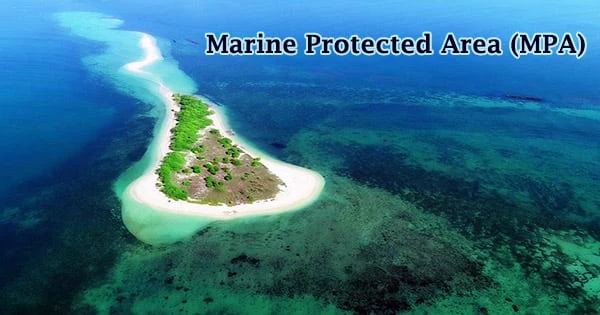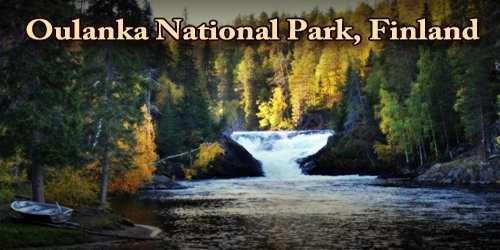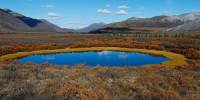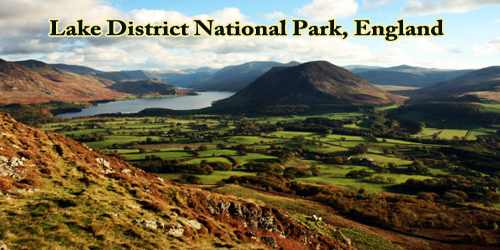In the same way that protected areas and parks operate on land, a marine protected area (MPA) is an area of the ocean where human activities are more carefully restricted than in the surrounding waters. It can be preserved for a variety of reasons, including economic resources, biodiversity conservation, and the protection of species.
Marine protected zones are established by governments to protect fragile marine ecosystems and other undersea resources from intrusive human activity. Local, state, territorial, native, regional, national, or international authorities preserve these marine resources, which vary greatly within and between nations. Different restrictions on development, fishing practices, fishing seasons and catch limits, moorings, and bans on removing or harming marine life are all examples of this variety.
MPAs have a variety of official definitions, but the most generally used is from the World Conservation Union, which defines an MPA (marine protected area) as:
“A clearly defined geographical space, recognized, dedicated and managed, through legal or other effective means, to achieve the long-term conservation of nature with associated ecosystem services and cultural values.”
In some cases (such as the Phoenix Islands Protected Area), MPAs can offer countries with money that is comparable to what they would receive if they granted corporations fishing licenses. It is unknown how important MPAs are to mobile species. There are several distinct sorts of MPAs that have been created for specialized objectives in various areas and circumstances.

MPAs, on the other hand, all have ecological, social, and economic goals in common. Oceanographers and marine biologists can conduct studies in marine protected zones since they are living laboratories. To define ecological borders and set MPA objectives, it is critical to have a thorough understanding of the area.
There are a number of large marine conservation areas around the world. It’s also crucial to have public support and well-established surveillance and compliance monitoring systems. The Cook Islands passed the Marae Moana Act in 2017, which designated the entire country’s marine exclusive economic zone, which covers 1.9 million square kilometers, as a zone with the goal of protecting and conserving the “ecological, biodiversity, and heritage values of the Cook Islands marine environment.”
Pockets of oceans, bays, and estuaries all around the world have been classified as marine protected areas (MPAs), from the Florida Keys to Australia’s Great Barrier Reef. There are roughly 1,700 MPAs in the United States, accounting for nearly 41% of the country’s maritime waterways. Antarctica, New Caledonia, Greenland, Alaska, Ascension Island, and Brazil all have extensive marine protected areas.
Ocean science funding has increased in tandem with the expansion of protected marine biodiversity areas, which is critical for the preservation of marine resources. MPAs are created by governments to aid in the protection of marine ecosystems that are endangered by human activities such as overfishing or oil drilling.
MPAs common ecological objectives are:
- To safeguard critical ecosystems for marine life;
- To safeguard critical ecosystems for marine life;
- To protect ecosystems that are crucial for species’ survival and/or lifecycles, including economically valuable species;
- To ensure the long-term viability and maintenance of marine species biodiversity;
- To protect depleted, threatened, rare or endangered species and populations;
- To prevent outside activities from negatively affecting the area(s).
A marine protected area (MPA) could be formed to conserve underwater archaeological sites, shipwrecks, and other historically significant locations. Only about 7.5 to 8% of the worldwide ocean area will be designated for conservation by 2020. MPAs are an important tool for managing marine resources.
However, MPAs alone cannot solve all of the world’s marine challenges, such as pollution, and other management measures are required to supplement MPAs around the world. Restrictive MPAs may make it illegal to conduct any human activity in the region. Others may just set limits on the number of fish that may be caught or the type of diving or boating that can be done.
MPAs have been recognized as the ocean’s best hope for enhancing the marine environment’s resilience to such pressures. Only around 1% of the world’s oceans are protected in no-take zones, according to MPAs, which cover just over 2% of the world’s oceans. MPAs that are well-designed and managed, with input and support from interested parties, can help to conserve biodiversity while also protecting and restoring fisheries.
MPAs are managed in a variety of ways, based on the unique characteristics of the area. Both marine ecosystems and local communities benefit from the establishment of a marine protected area. By promoting fisheries and tourism, MPAs can aid in the long-term viability of local economies. It maintains the natural aesthetic aspects of marine areas while preserving and managing historically and culturally significant locations for local populations.
The majority of MPAs have been established in territorial seas, where they may be enforced by the appropriate authorities. In exclusive economic zones and international waters, however, MPAs have been formed. MPAs also serve as living laboratories for scientists studying marine ecosystems and other aspects of the water.
With rapidly dwindling marine and coastal resources across the region, it’s vital that existing MPAs are supported in their successful management, and that new MPAs are developed to offer a buffer against the ongoing human-induced stresses on our coastal marine ecosystems. Designating an area as an MPA is also a good approach to protect and increase biodiversity, which benefits ecosystems.
















